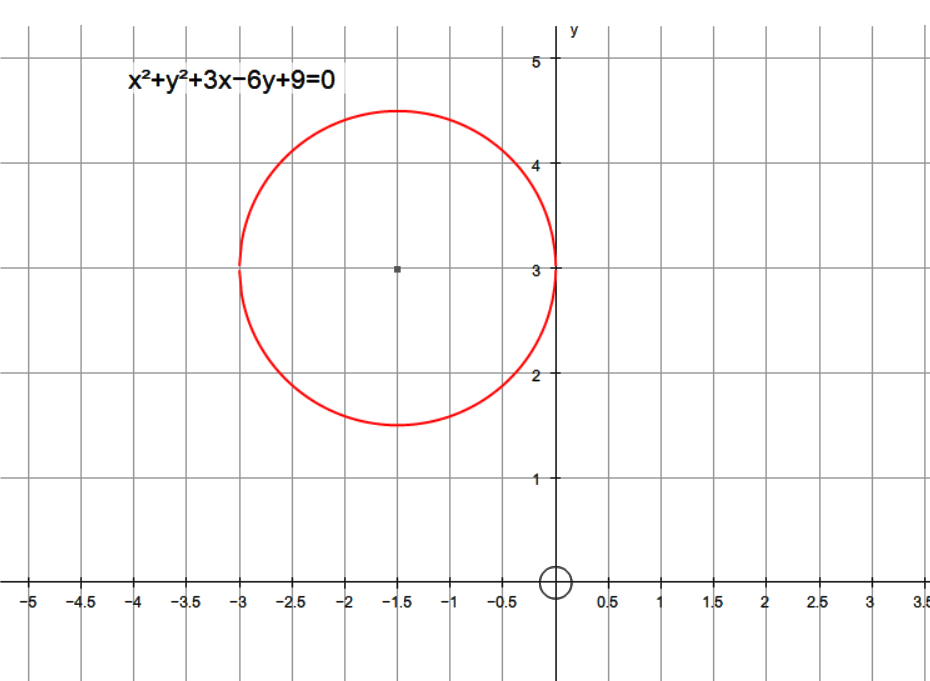X2 + y2 +3x-6y+9=0 How can you find the center, radius, and intercepts? I'm not sure how to put in general or standard form.
1 Answer
See below.
Explanation:
We need to get this into the form:
Where:
To reach this form, we complete the square on one side of the equation for both x and y.
Group terms containing x together and group terms containing y together:
Place a bracket around the x terms:
Working inside the bracket, add the square of half the coefficient of the x term:
Now subtract the square of half the coefficient of x outside the bracket. This is equivalent to doing nothing:
Now convert
Now do the same with the two terms containing y:
Now simplify:
From this we see that:
( note the signs ) This is because we had
So:
So the centre is at
And the radius is
Intercepts
y intercepts occur when
Only one value indicates that the circle only touches the y axis it dose not cross it. So no y intercepts
x axis intercepts occur when
Quadratic discriminant:
No real solutions, so no x axis intercepts
GRAPH:


